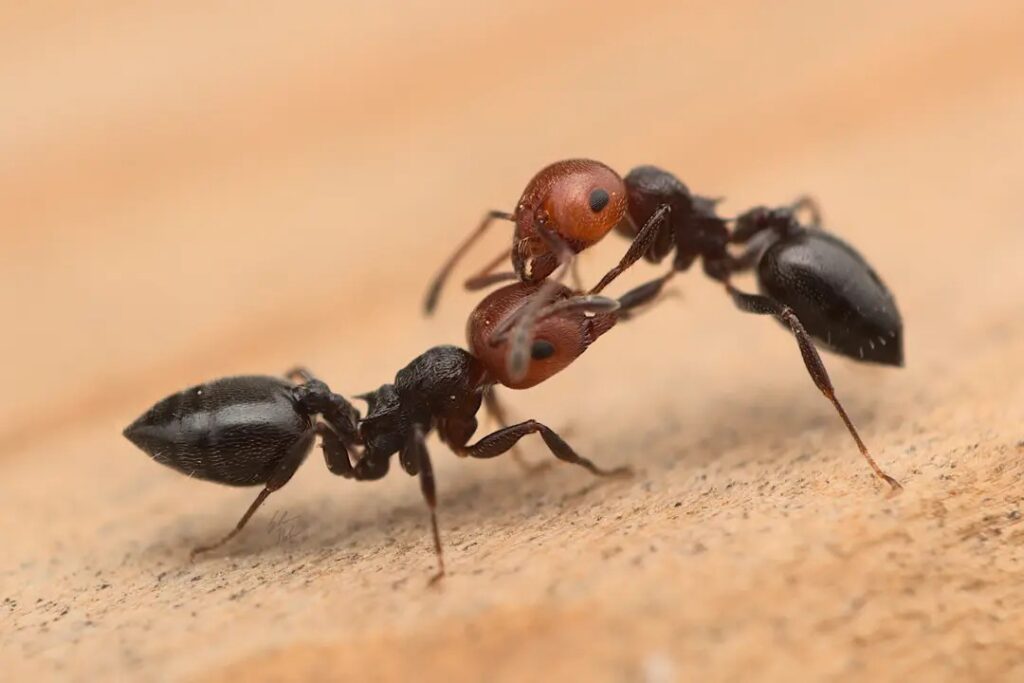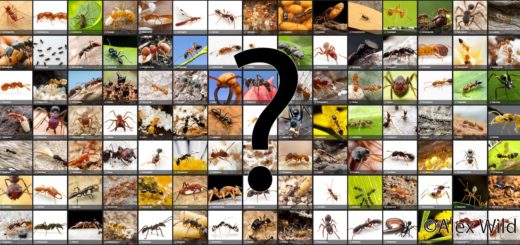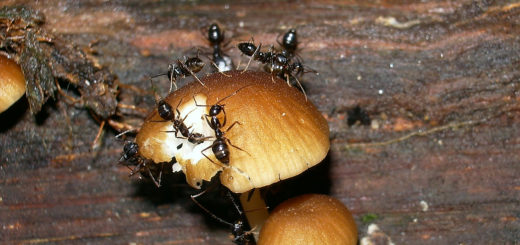How does urban life shape ant morphology?
In addition to shaping human landscape, urbanization is also shaping city dwelling animal species. In the new study “Urbanisation homogenises the functional trait space and reduces body size of an arboreal ant species (Hymenoptera: Formicidae)”, Ferrari et al. investigated how living in cities affects morphological traits of Crematogaster scutellaris workers across an urbanization gradient in Northern Italy. Here, Carlo Polidori offers insights on this recent study and its importance to research on how urbanization affects morphological diversity in ants.

An Interview compiled by Salvatore Brunetti and edited by Beatriz Portinha


MNB: Could you tell us a bit about yourself?
CP: I am a zoologist with a passion for insect behaviour, ecology and evolution. I am interested in foraging ecology, social evolution, functional morphology and adaptations, and responses to anthropogenic stressors. My studies focus especially on Hymenoptera, one of the “big four” orders of insects, with which I fell in love almost 30 years ago, and that really never disappoint in terms of new, exciting findings on their astonishing biology!
MNB: Could you briefly outline your research on “Urbanisation homogenises the functional trait space and reduces body size of an arboreal ant species (Hymenoptera: Formicidae)” in layperson’s terms?
CP: Cities are human-modified areas in which we share our lives with many other animals. Among them, certainly insects. Heavily urban habitats tend to be warmer and less green compared with natural habitats, and such alterations are known to affect insects in different ways. Even when looking at a single species, urbanization may favour the occupancy of more strongly urbanized areas by individuals with a certain morphology, that may be more adapted to live under these conditions. We know little of these phenomena in ants, and we decided to focus on a common ant species, Crematogaster scutellaris, which is known to live in diverse environments, including cities. We have found that workers of this ant species were morphologically different – they are smaller and with modified eyes and antennae – in heavily urban sites, and that they are overall morphologically more similar among them in heavily urban sites than elsewhere.

MNB: What is the take-home message of your work?
CP: Cities can act as a “filter” and as a “homogenizer” of ant morphology at the intra-specific level (i.e., within the same species). This suggests that urbanisation has a relevant impact on populations. For example, more homogeneous populations composed of smaller ants may potentially make these ants more vulnerable to environmental changes.
MNB: What was your motivation for this study?
CP: Me and colleagues previously analysed topics similar to that of this study in solitary bees and primitively eusocial bees and wasps. To include an advanced eusocial species was a necessary step to attempt to generalize a bit more the effects of urbanization on Hymenoptera, taking into account their very diverse social biology.
MNB: What was the biggest obstacle you had to overcome in this project?
CP: In general, we did not have important obstacles. When studying the effects of urbanization on insects, including ants, it is crucial to choose the right gradient of temperature, green extent (the overall size or area of green spaces) and green fragmentation (the fragmentation of large, continuous green spaces into smaller, disconnected patches caused by human activity or natural events). Then, we must hope that the model species occurs in great abundance across the whole gradient. At the end, after several exploratory inspections of many sites, we found an adequate number of locations harbouring C. scutellaris populations, covering the whole environmental gradient, so we could successfully carry out the study. In addition, well, a very strong flood affected one site and this had to be excluded from the field work afterwards. Field conditions always rule our work!

MNB: Do you have any tips for others who are interested in doing related research?
CP: I think that there is lot more to discover about the response of ants to urbanization, so new studies on this topic are very welcome. I would suggest caution in choosing the right urban gradient – it is fundamental to maximize variation in climatic and habitat variability, even if the spatial scale of analysis is not very wide (i.e. within towns) – and to properly preserve the sampled individuals – in adequate sample size – in order to perform accurate phenotypic measurements. Also, the morphological traits to be analysed should be chosen based on their known links to fitness components.
MNB: Where do you see the future for this particular field of ant research?
CP: My wish is that many researchers will be involved in future in urban ant morphology, ecology and evolution research. We still need lot of information to draw general conclusions on the effects of urbanization on these insects. Another interesting, and not yet explored, topic is to understand if there is a “genetic signature” of such morphological shifts along urbanization gradient. We also still do not know if social behaviour and colony organization change with urbanization as well. Additionally, ants show a huge diversity in terms of, e.g., nesting habits, colony size and food resource exploitation. Using a wide range of species as models in order to cover such variability is needed. Finally, since some ants are ecologically relevant insects in terms of soil alteration, it will be very interesting to study their role in urban parks from this point of view. Ants can potentially support plant growth in urban parks by acting on soil properties, as well as by preying on plant pests.






Recent Comments